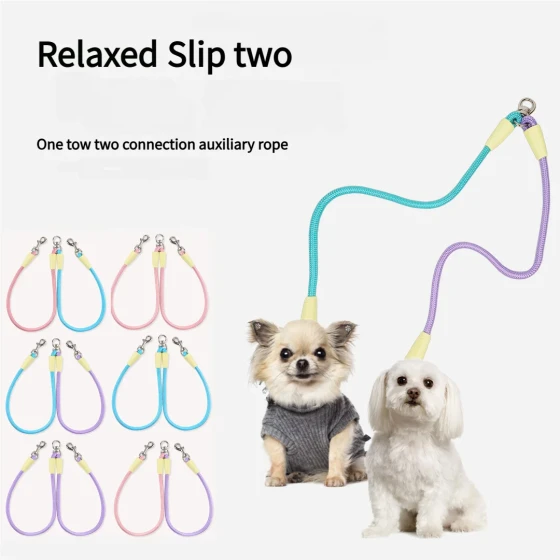Vitamins, Not a Single One Can Be Missing — A Must-Know for Pet Owners

Labrador
Because of Beriberi, Vitamins Came to Be — The Origin of Vitamins
The discovery of vitamins is one of the great discoveries of the 20th century. However, its discovery was related to beriberi. In 1897, C. Eijkman found in Java that eating only polished white rice could cause beriberi, while unpolished brown rice could treat the disease. He also found that the substance curing beriberi could be extracted with water or alcohol, and at that time, this substance was called “water-soluble B”.
In 1906, it was proven that there were "accessory factors" in food besides proteins, fats, carbohydrates, inorganic salts, and water. Although present in very small amounts, they were essential for animal growth. In 1911, C. Funk identified that the substance in brown rice that countered beriberi was an amine (a nitrogen-containing compound), essential for sustaining life, so he proposed the name “Vitamine”—from Vital (life) + amine, literally meaning “life amine”.
Subsequently, many vitamins were discovered, each with different chemical properties and physiological functions; it was also found that many vitamins did not contain amines or nitrogen at all. However, Funk’s name continued in use, dropping the last letter “e”. The originally discovered Vitamin B was later confirmed as a complex of several vitamins, separated through purification. They are several substances with similar properties and distribution in foods, mostly serving as coenzymes. Some require balanced intake, such as Vitamins B1, B2, and PP, otherwise physiological functions might be affected. The discovery and application of vitamins not only brought a huge transformation to the human world but also represent essential nutrients for pets.
None of the Vitamins Can Be Missing
Vitamins are low molecular organic compounds essential for pet metabolism but required in very small amounts. They generally cannot be synthesized within the body and mainly rely on pet food supply. Except for a few vitamins, most need to be additionally supplemented in pet food production.
Vitamins are not raw materials for forming body tissues or energy sources. Instead, they mainly participate broadly in metabolism as coenzymes and catalysts, ensuring cellular structure and normal function of tissue organs, maintaining pet health, and supporting various productive activities. In pet food, strict supplementation is required according to pet species, physiological stages, developmental status, and other factors. Vitamins needed by other animals cannot be substituted, as normal and abnormal dosages often cause sensitive changes in pets. Random addition is strictly prohibited.
Some vitamins can be partially synthesized by pets themselves and do not require additional supplementation during pet food manufacturing, which otherwise only increases cost without practical significance. However, some vitamins must be added to pet food because pets cannot synthesize them and it is difficult to obtain them from other sources, so food is the only source.
Different vitamins have diverse physiological effects and characteristics for pets; deficiency or excess can significantly impact pets. Therefore, strict control of different vitamin requirements during pet food formulation is necessary.
How to Properly Control Vitamins
Currently, 14 vitamins have been identified, classified by solubility into two major groups: water-soluble and fat-soluble. Different vitamins have strict dosing requirements. Appropriate supplementation promotes healthy growth and development, improves palatability, enhances immunity, and prevents diseases in pets. Both deficiency and excess result in severe adverse effects.
Vitamin intake deficiency or overdose in pets may cause poisoning, organ degeneration, hair loss, difficulty moving, inability to stand, hemolysis, loss of appetite, myocarditis, muscle atrophy, growth stagnation, blindness, anemia, convulsions, hypoxia, or even death. Therefore, strict adherence to required vitamin doses in pet food is essential.
Vitamins, Where Are You?
Rich vitamin nutrition is contained in a wide range of foods, specifically:
Vitamin A: animal liver, eggs, dairy products, carrots, pumpkin, bananas, oranges, and some green leafy vegetables;
Vitamin B1: sunflower seeds, peanuts, soybeans, pork, cereals;
Vitamin B6: meat, cereals, vegetables, and nuts;
Vitamin B12: pork, beef, lamb, fish, poultry, shellfish, eggs.
Vitamin C: lemons, oranges, apples, sour jujubes, strawberries, chili peppers, potatoes, spinach;
Vitamin D: cod liver oil, eggs, margarine, milk, tuna;
Vitamin E: grain germ, vegetable oil, green leaves;
Vitamin K: green leafy vegetables.
Only by fully understanding the different types of vitamins contained in various foods can we effectively control vitamin supplementation and addition during feeding to keep our pets healthier and more beautiful.
Supplementing Vitamins Requires Differentiated Treatment
Vitamins undergo complex changes during pet food formulation, including physical, chemical, and even microbial changes. Thus, vitamin supplementation should consider their specific characteristics: strictly control amounts based on pet species and physiological stages; fully account for vitamin losses during high-temperature cooking; consider antagonisms and contraindications between vitamins and other nutrients.
We believe these detailed explanations about vitamins can help pet owners better understand how to guarantee the nutritional value of their pets’ food and how to properly care for them. Actually, much pet nutrition knowledge is accumulated bit by bit in daily life. Today, is your pet happy?



